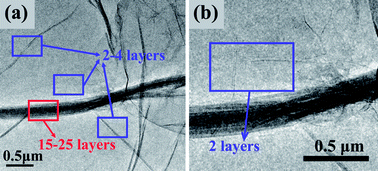Evaluation of piezoelectric property of reduced graphene oxide (rGO)–poly(vinylidene fluoride) nanocomposites
Abstract
We improved the piezoelectric property of poly(vinylidene fluoride) (PVDF) by employing

Maintenance work is planned for Wednesday 1st May 2024 from 9:00am to 11:00am (BST).
During this time, the performance of our website may be affected - searches may run slowly and some pages may be temporarily unavailable. If this happens, please try refreshing your web browser or try waiting two to three minutes before trying again.
We apologise for any inconvenience this might cause and thank you for your patience.
* Corresponding authors
a
Department of Mechanical Engineering, Chiba University, 1-33 Yayoi-chio, Inage-ku, Chiba City, Chiba 263-8522, Japan
E-mail:
huning@faculty.chiba-u.jp, alamusi@chiba-u.jp
Fax: +81-43-290-3204
Tel: +81-43-290-3204
b
Department of Materials Science, National University of Singapore, 21 Lower Kent Ridge Road, Singapore 119077
E-mail:
msexuejm@nus.edu.sg
c
Department of Machine Intelligence and Systems Engineering, Akita Prefectural University, Akita 015-0055, Japan
E-mail:
qiu@akita-u.ac.jp
d
Department of Mechanical Engineering, University of Houston, Houston, TX, USA
E-mail:
cchang2@uh.edu
e
Department of Aerospace Engineering, Tohoku University, 6-6-01 Aramaki-Aza-Aoba, Aoba-ku, Sendai 980-8579, Japan
E-mail:
atobe@ssl.mech.tohoku.ac.jp, fukunaga@ssl.mech.tohoku.ac.jp
f
Department of Nanomechanics, Tohoku University, 6-6-01 Aramaki-Aza-Aoba, Aoba-ku, Sendai 980-8579, Japan
E-mail:
liyuan@ism.tohoku.ac.jp
g
Institute of Road and Bridge Engineering, Dalian Maritime University, Dalian 110015, P.R. China
E-mail:
yhzhao@dlmu.edu.cn
We improved the piezoelectric property of poly(vinylidene fluoride) (PVDF) by employing

 Please wait while we load your content...
Something went wrong. Try again?
Please wait while we load your content...
Something went wrong. Try again?
Alamusi, J. Xue, L. Wu, N. Hu, J. Qiu, C. Chang, S. Atobe, H. Fukunaga, T. Watanabe, Y. Liu, H. Ning, J. Li, Y. Li and Y. Zhao, Nanoscale, 2012, 4, 7250 DOI: 10.1039/C2NR32185H
To request permission to reproduce material from this article, please go to the Copyright Clearance Center request page.
If you are an author contributing to an RSC publication, you do not need to request permission provided correct acknowledgement is given.
If you are the author of this article, you do not need to request permission to reproduce figures and diagrams provided correct acknowledgement is given. If you want to reproduce the whole article in a third-party publication (excluding your thesis/dissertation for which permission is not required) please go to the Copyright Clearance Center request page.
Read more about how to correctly acknowledge RSC content.
 Fetching data from CrossRef.
Fetching data from CrossRef.
This may take some time to load.
Loading related content
